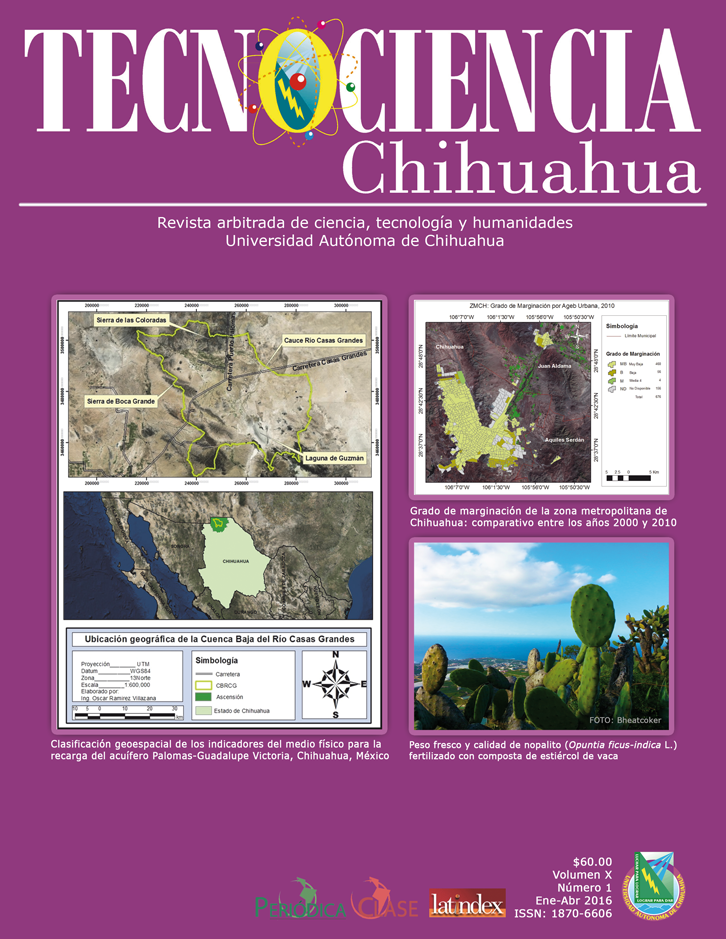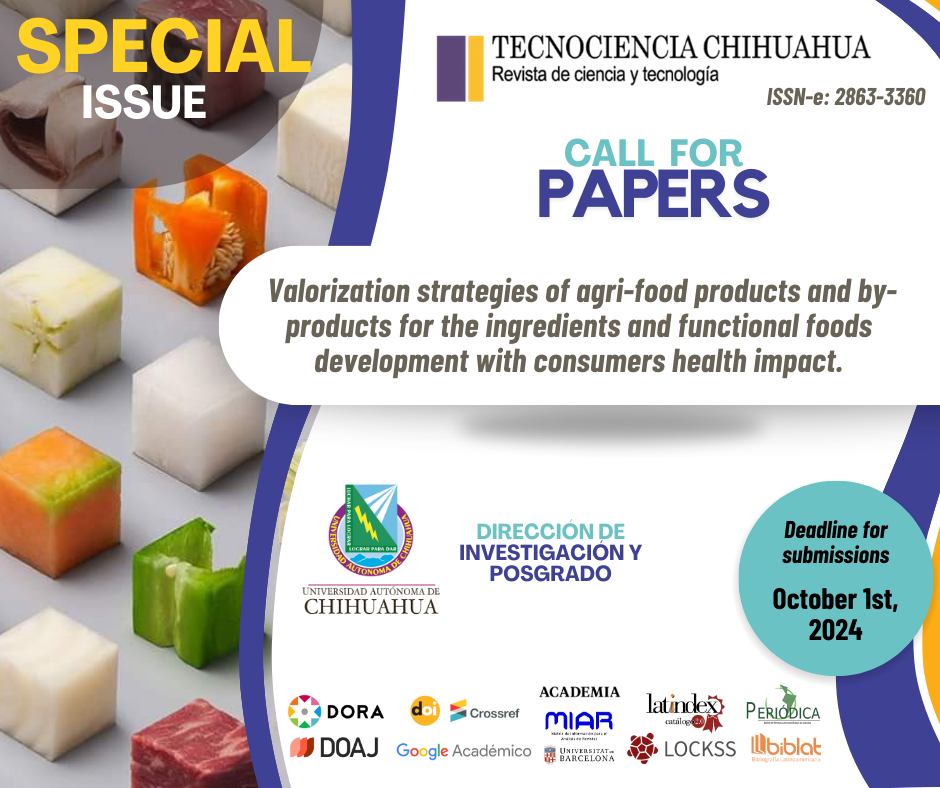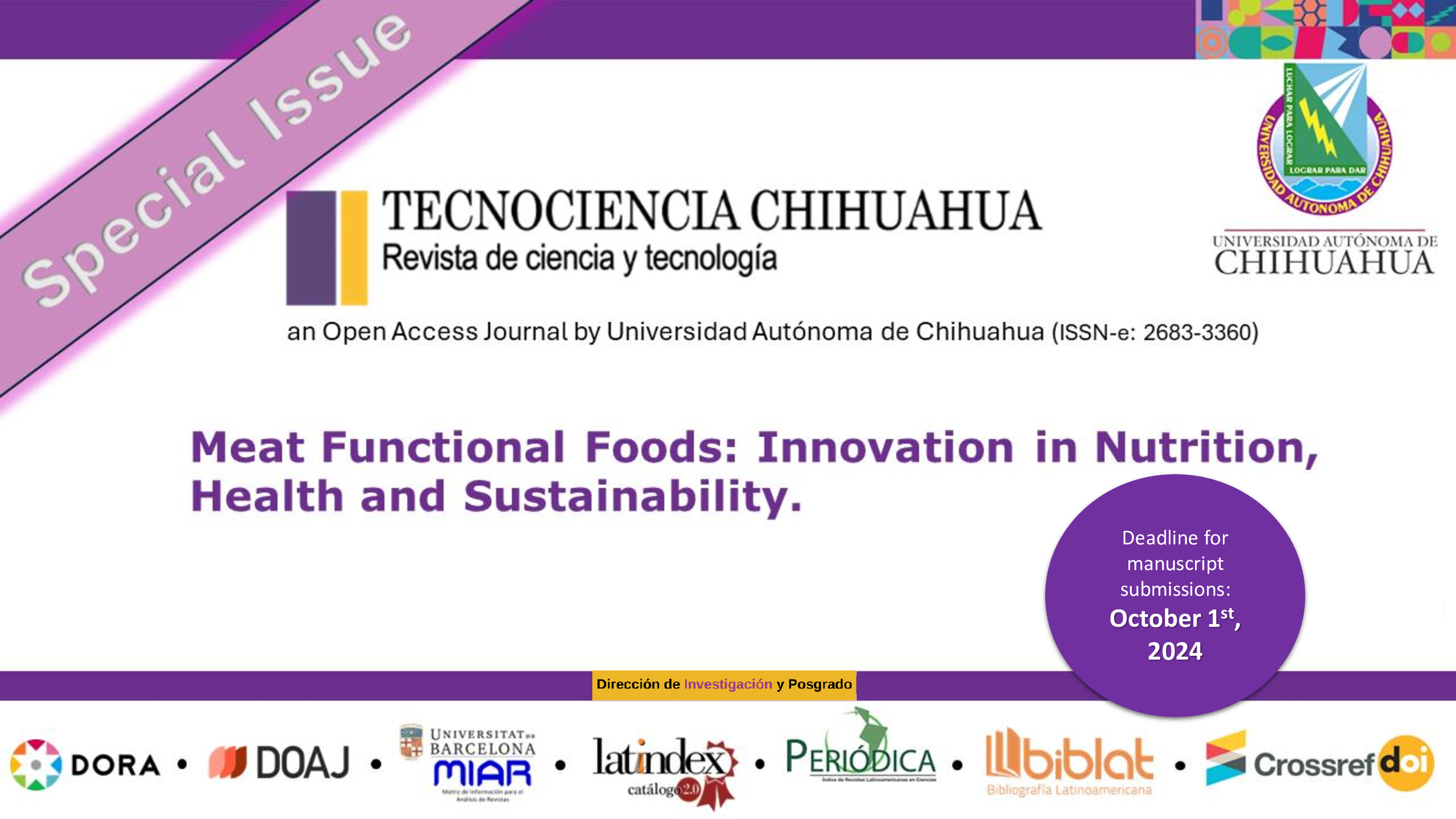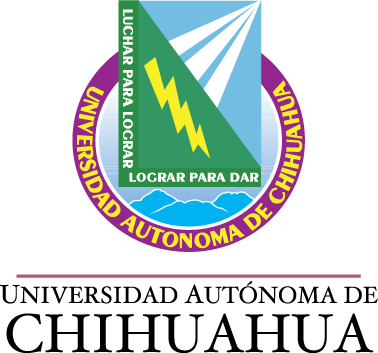Concentración de fructosa en frutos de toronja (Citrus paradisi Macf.) en desarrollo
Fructose concentration in fruit development in grapefruit (Citrus paradisi Macf.)
Resumen
El estudio se realizó en el ciclo 2014-2015, en una huerta de toronja (Citrus paradisi Macf.) variedad Rio Red, del Municipio de General Terán, N.L. México. El objetivo fue evaluar la concentración de fructosa en frutos de toronja en desarrollo procedentes de árboles de producción elevada («on») y producción escasa («off»), en un ciclo de producción en respuesta a la aplicación de ácido giberélico (Acigib 10 % de GA3 , 25 ppm), urea foliar (1 kg 100 L-1) y anillado de ramas. La fructosa fue cuantificada en frutos de toronja a los 30, 60 y 90 dda (días después de antesis). El análisis de fructosa se realizó mediante Cromatografía Líquida de Alta Presión (HPLC). A los 30 dda, las aplicaciones de urea foliar y GA3 en árboles «on» resultaron en los valores más altos en la concentración de fructosa en frutos. A los 60 dda no se presentaron diferencias estadísticas entre los tratamientos. A los 90 dda los frutos de árboles «on» con urea foliar y con anillado se comportaron estadísticamente diferentes al resto de los tratamientos, con menor concentración de fructosa. El comportamiento de la concentración de fructosa en frutos de toronja entre muestreos fue de un incremento en todos los tratamientos de árboles «on» y «off».
Citas
Ben-Cheikh, W., J. Pérez-Botella, F. R. Tadeo, M. Talón & E. Primo-Millo. 1997. Pollination increases gibberellin levels in developing ovaries of seeded varieties of citrus. Plant Physiology 114(2): 557-564. https://doi.org/10.1104/pp.114.2.557
El-Otmani, M., F. Z. Taibi, B. Lmoufid, A. Ait-Oubahou & C. J. Lovatt.2004a. Improved Use of Foliar on Clementine Mandarin to Manipulate Cropping in a Sustainable Production System. Acta Horticulturae 632: 167-175. https://doi.org/10.17660/ACTAHORTIC.2004.632.21
El-Otmani, M., A. Ait-Oubahou, C. J. Lovatt, F. El-Hassainate & A. Kaanane. 2004b. Effect of Gibberellic Acid, Urea and KNO3 on Yield and on Composition and Nutritional Quality of Clementine Mandarin Fruit Juice. Acta Horticulturae 632:149-157. https://doi.org/10.17660/ActaHortic.2004.632.19
Espinoza, P. F. L. 2012. Metabolismo de carbohidratos. Facultad de ciencias Agropecuarias. Universidad Católica Agropecuaria del trópico seco.
Kanayama, Y., M. Kogawa, M. Yamaguchi & K. Kanahama. 2006. Fructose content and the activity of fructose-quality Enzymes in the fruit of Eating-quality Peach cultivars and Native-type Peach Cultivars. Journal of the Japanese Society for Horticultural Science. 74(6): 431-436. https://tinyurl.com/2oaquzes
Laskowski, L. E. 2010. Determinación de carbohidratos solubles en pedicelo y fruto de Citrus Sinensis (L.) Osbeck, Durante el crecimiento inicial. Interciencia 35(5): 388-392. https://www.redalyc.org/articulo.oa?id=33913153012
Mahouachi, J., D. Iglesias, M. Agustí & M. Talón. 2009. Delay of early fruitlet abscission by branch girdling in citrus coincides with previous increases in carbohydrate and gibberellins concentrations. Plant Growth Regulation 58(1):15-23. https://doi.org/10.1007/s10725-008-9348-6
Rivas, F., A. Martínez-Fuentes, C. Mesejo, C. Reig & M. Agustí. 2010. Efecto hormonal y nutricional del anillado en frutos de diferentes tipos de brotes de cítricos. Agrociencia Uruguay 14(1): 155-160. https://tinyurl.com/3er8vtt2
Rivas, F., Y. Erner, E. Alós, M. Juan, V. Almela & M. Agustí. 2006. Girdling increases carbohydrate availability and fruit-set in citrus cultivars irrespective of parthenocarpic ability. Journal of Horticultural Science & Biotechnology 81(2) p. 289-295. https://doi.org/10.1080/14620316.2006.11512064
Talón, M., L. Zacarías & E. Primo-Millo.1992. Gibberellins and parthenocarpic ability in developing ovaries of seedless mandarins. Plant Physiology 99(4): 1575-1581. https://doi.org/10.1104/pp.99.4.1575
Derechos de autor 2016 TECNOCIENCIA Chihuahua

Esta obra está bajo licencia internacional Creative Commons Reconocimiento-NoComercial 4.0.









